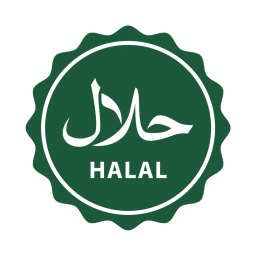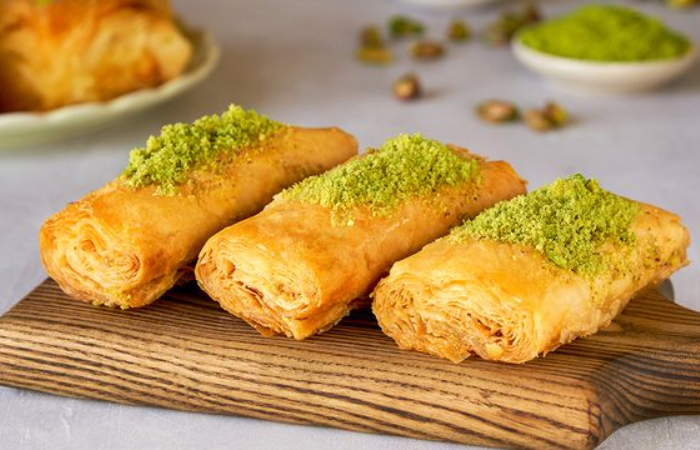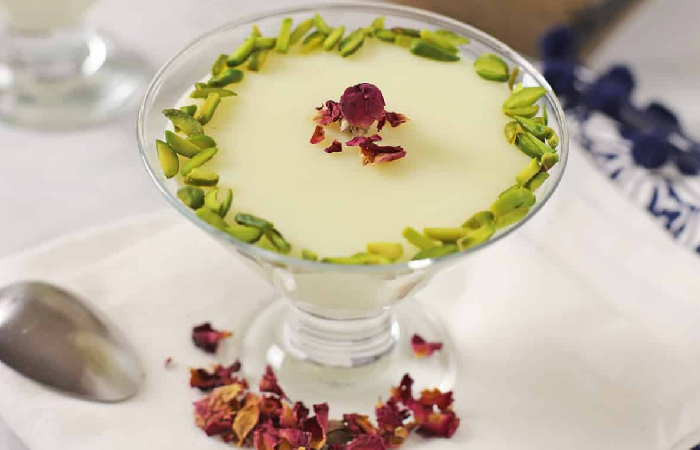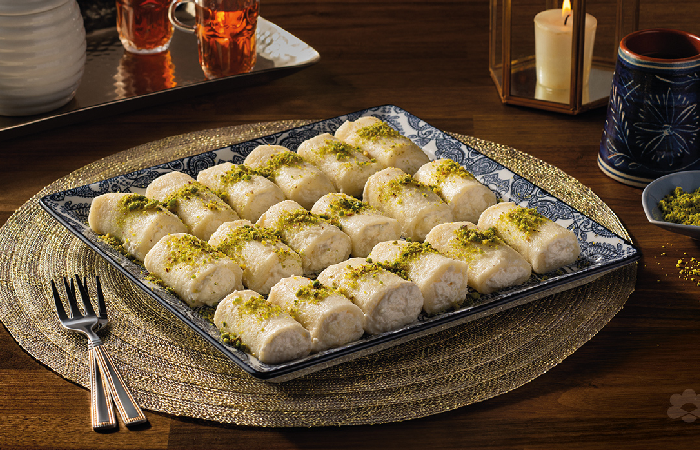Exploring Halal Thai Cuisine: A Culinary Journey
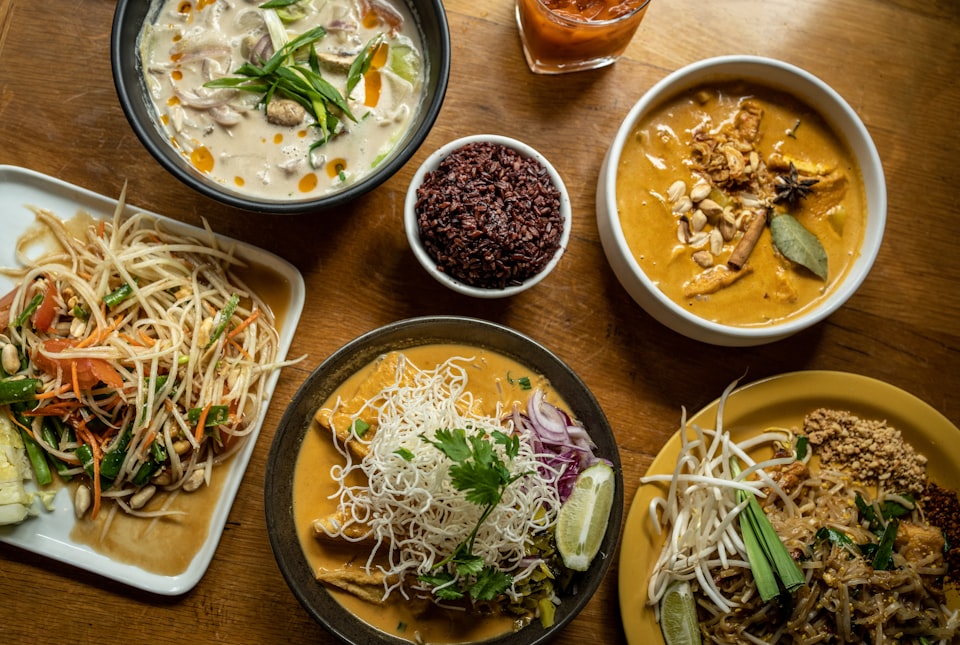
There are many delectable dishes in Thailand that are permissible for Muslim consumption. This is a product of both the flourishing Thai culture and the cuisine's global renown. On this culinary adventure, explore the diverse flavors and mouthwatering treats Thailand has to offer while following Islamic dietary regulations.
If you are prepared and have an adventurous spirit, you can discover a world of flavor that pleases both your palate and your religious beliefs.
Introduction
Thai food combines Eastern and Western elements in a sophisticated but simple way to create a unique flavor. The combination of bitter, spicy, salty, sweet, and sour elements gives each dish a distinct flavor. Thai food varies depending on the area or region it is produced in.
In the past, plants, herbs, and aquatic animals were commonly used in most diets. Because of their Buddhist heritage, people typically avoided eating large amounts of meat in favor of flavoring strips of meat with herbs and spices or cooking or roasting meat before shredding it.
In this Blog we will understand the halal aspects of Thai cuisine beginning with understanding halal in Islam.
Overview Of Significance of Halal food in Islam
"Halal" is a phrase widely used in Arabic to denote permissibility or acceptance. Halal refers to actions and behaviors that are lawful under Islamic principles. "Haram" refers to actions or behaviors that are banned in Islam.
Halal food is any food that is considered permissible by Islamic law, as specified in the Quran. According to Islamic dietary regulations, all food and beverages are considered Halal unless explicitly disallowed.
These laws let Muslims all across the world identify which foods are Halal, allowing them to meet their dietary needs in conformity with Islamic teachings. Muslims worldwide embrace the Quran as the book of perfect direction and bearing for humankind, and it is the last revelation.
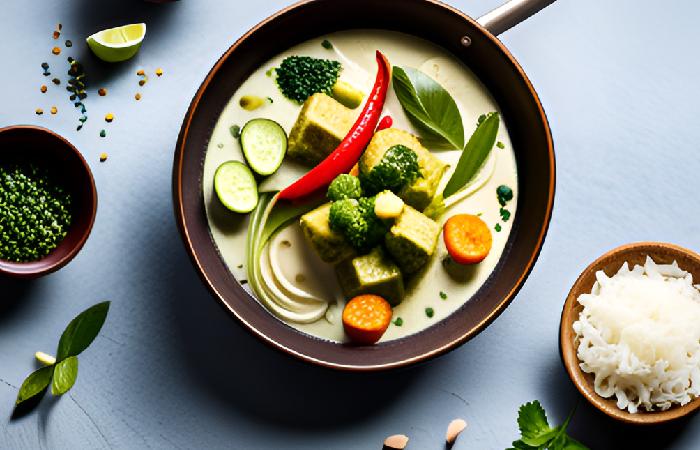
Introduction to Thai Cuisine and its Popularity Worldwide
Thai food was traditionally prepared by baking, grilling, and stewing. The cuisine of Thailand has been considerably affected by its status as a major tourist destination and economic power in the region. Thai people are known for their commitment and inventiveness in the kitchen. They've even mastered product substitution.
-
Approximately 1,400 years ago, ancient Chinese travelers visited Thailand. They brought frying, stir-frying, and deep-frying techniques to Southeast Asia. Thai classics like pad thai and khao pad (fried rice) are still made with these methods.
-
Influences from the West have existed since 1511, when the Portuguese dispatched their first envoy to the Ayutthaya monarchy. Portuguese and Spanish ships introduced new American foods. Tomatoes, corn, papaya, pea eggplants, pineapple, pumpkins, cilantro, cashews, and peanuts were introduced during the Columbian Exchange. The introduction of the chili pepper was the most significant influence from the West.
-
Thai cuisine was also inspired by Dutch, French, and Japanese cuisines since the 17th century.
-
Indian cuisine greatly influenced Thai food as well. Thai people learned several methods from Indians for using spices in their food. The Thais were also taught how to make herbal medicines by the Indians.
-
Over time, fresh herbs like galangal and lemon grass have become more popular in Thai curries. While the usage of spices declined. Thai cuisine was once far hotter than it is now.
-
Tam (pounded foods), yam (spicy salads), kaeng (curries), and tom (cooked dinners) are the four main categories of traditional Thai cuisine.
Popularity Worldwide
Thai cuisine has become more and more popular globally. It transcends beyond national borders. Below is the possible explanation to this widespread popularity
- Thai restaurants are found in major cities all over the world. This makes Thai food more accessible to people who haven't tried Thai food before.
- It's easy to incorporate regional flavors and ingredients into Thai cooking. This gives local chefs the opportunity to create fresh takes on classic Thai food.
- Fusion food is made by combining Thai ingredients and cooking techniques with other culinary traditions.
- Thai food is becoming widely available and more affordable because of Thailand's growing street food industry.
To sum it up, Thai food is quite popular because of its flavor, versatility, and rich cultural heritage. Thai cuisine offers a unique and exceptional culinary experience to people worldwide. It ranges from the vibrant flavors of a Pad Thai to the comforting warmth of a bowl of Tom Yum soup.
The Essence of Halal Thai Cuisine
In Thai cooking, the term "halal" denotes food that adheres to Islamic dietary laws. This comprises:
- Meat Source: Islamic slaughter procedures must be followed to ensure compassionate handling and a quick, clean kill.
- Ingredients: Every component used in the recipe must be halal, or acceptable for ingestion. Blood, pork, and specific animals like scavengers and carnivores are not included in this. Additionally, forbidden is alcohol.
- Production Process: No non-halal ingredient may contaminate any part of the preparation procedure. This covers storage spaces, cooking surfaces, and utensils.
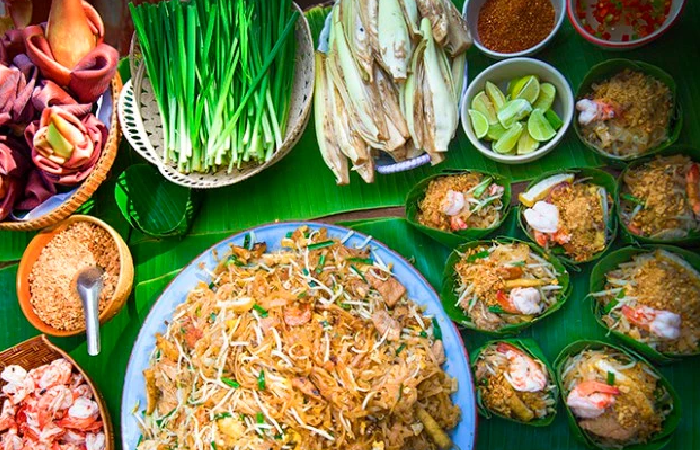
Thai Restaurants Should Have Halal Certification
Despite the sizeable Muslim community in Thailand, not all Thai eateries offer Halal food. For Muslim clients to feel transparent and at ease, halal certification is essential:
- Verification of Practices: The restaurant must have adherence to Islamic rules for the procurement of meat. The choice of ingredients, and the preparation of food, is also confirmed by its certification by a respectable Halal body.
- Building Trust: The Halal certification gives Muslim customers the assurance that the food they're eating complies with their religious principles.
- Serving a Wider Audience: Restaurants that have earned the Halal certification might draw in more clients, including both locals and Muslim visitors.
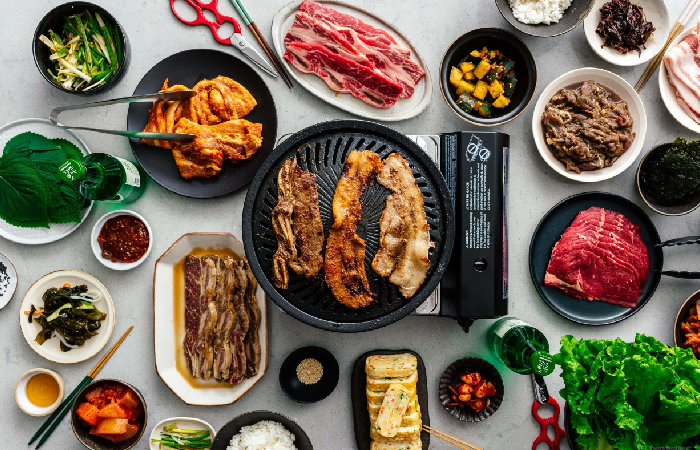
Best Thai Food: Halal Edition
Thai food is full of taste and aromas, making it a fascinating culinary adventure for Halal diners. Even while certain well-known Thai meals may include non-Halal ingredients, you can still enjoy the flavors of Thai food while upholding your religious convictions with a little modification. Here's an overview of the wide variety of Halal Thai cuisine, including some well-known favorites:
Typical Thai Halal Foods:
- Pad Thai: Thai food is best experienced through the famous stir-fried noodle dish, pad Thai.
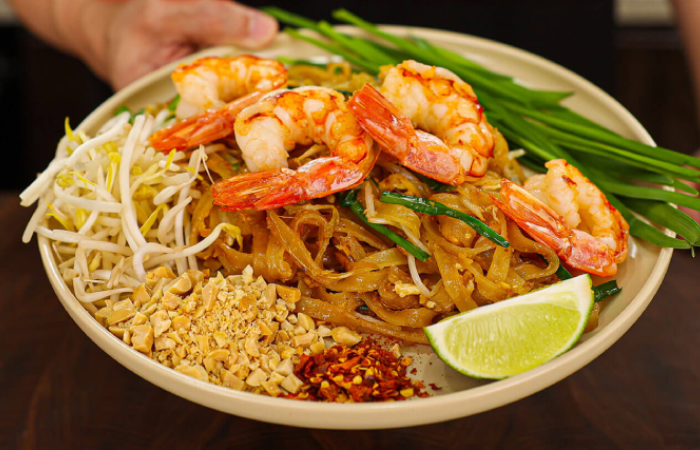
-
If you want a Halal variation, choose eateries that serve tofu or chicken instead of shrimp and make sure the fish sauce they use comes from sources that are Halal. For an even more tasty and filling lunch, add veggies like peanuts, scallions, and bean sprouts.
-
Thai staple Tom Yum Soup: is a fragrant and spicy soup. The Halal variation, which is typically cooked with shrimp, can also be made with fish, poultry, or even vegetarian substitutes such mushrooms and vegetables.
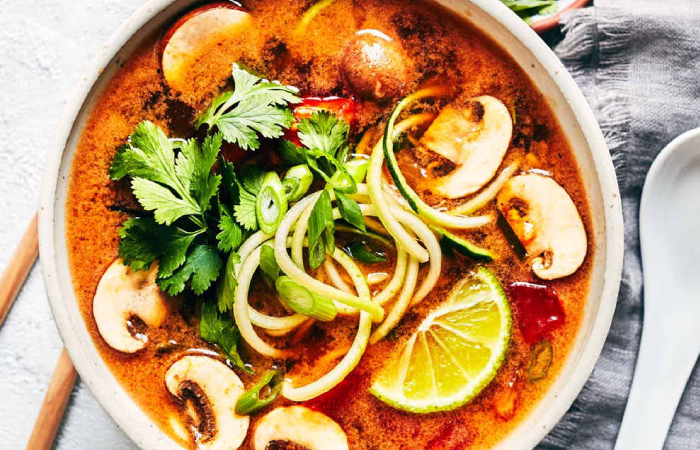
The base for the rich and energizing Tom Yum flavor is created by aromatics like lemongrass, galangal, kaffir lime leaves, and chilies, which are essential components of Halal cuisine.
- Gaeng Keow Wan, or green curry: is a popular and creamy curry dish. Shrimp paste is usually substituted with chicken or vegetable stock in halal choices.
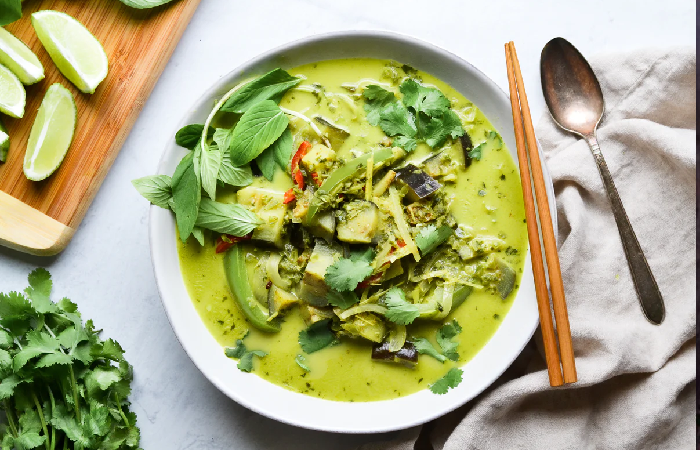
Green chiles provide the bright green color, while coconut milk adds a rich, creamy texture. Seek out eateries that use chicken that has received Halal certification and confirm that the curry base does not contain shrimp paste.
Past the Classics:
The adaptability of Thai Halal food is what makes it so beautiful. Here are a few more choices to consider:
- Thai Fried Rice, or Khao Pad: is a tasty dish that is readily converted to a Halal lunch.
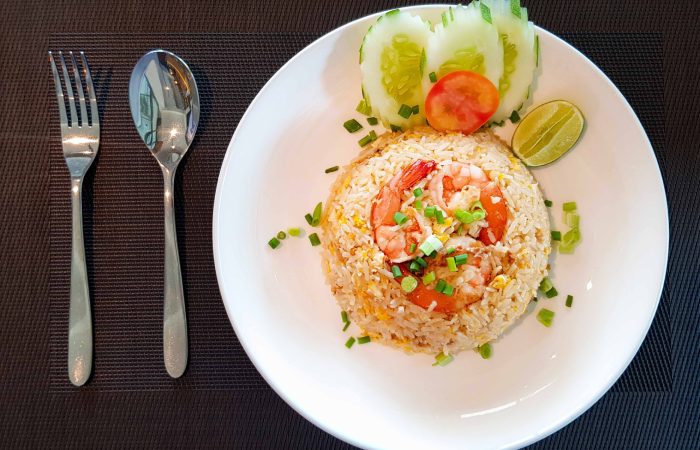
-
Pick a restaurant that cooks using vegetable oil or clarified butter, then add your preferred Halal ingredients to it, such as vegetables, eggs, chicken, or shrimp (if they are sourced ethically).
-
Massaman Curry: This aromatic, creamy curry is a must-try, influenced by Thailand's Muslim community. Traditionally made with beef, it can also be eaten with vegetables or fowl as long as the meat comes from a halal source.
-
Som Tam (Papaya Salad, but Proceed with Caution): This light salad, which originated in Laos, is a wonderful first course.
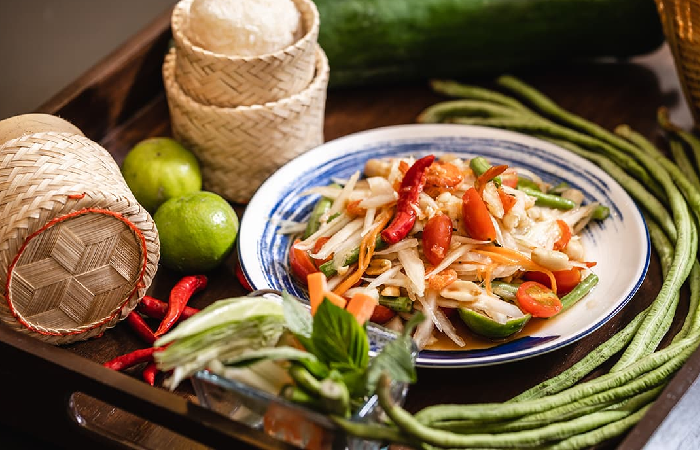
But keep in mind that fish sauce is typically used to make it. Find out if they can make it with a lime-based dressing or a fish sauce substitute that has received Halal certification.
Regional Specialties
Try new dishes that you are not familiar with. There are several delectable options available for halal street food:
- Satay: A common street food item is skewered grilled beef (make sure it's halal) with peanut sauce.
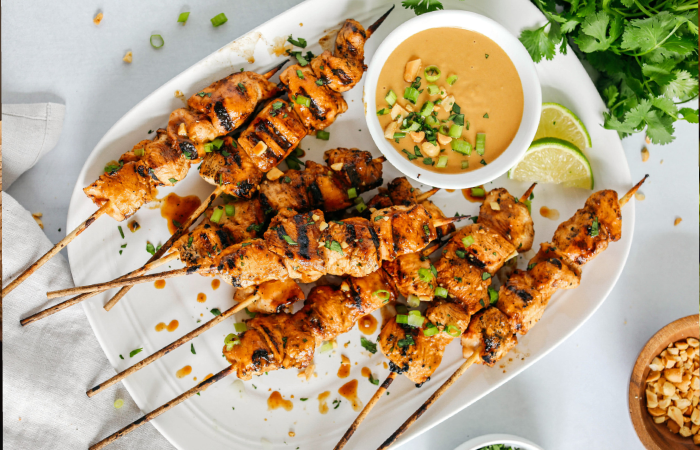
- Roti Canai: A delectable flatbread topped with a range of sweet or savory ingredients, it pairs well with a selection of halal dips and curries.
Always inquire about ingredients and preparation techniques when in doubt. Dietary restrictions are gladly accepted at many eateries.
Exploring Thai halal food offers the chance to:
-
Taste Distinct Flavors: Acquaint yourself with the lively fusion of sweet, salty, sour, spicy, and savory flavors that characterize Thai food.
-
Discover Thai Culture: Bask in the kindness of Thai people and take in the lively ambiance of restaurants and markets.
-
Respect Diversity: Learn about the diverse range of influences, including Muslim contributions, that have shaped Thai food.
So, set out on your halal Thai culinary journey with an inquisitive palate and an open mind. You'll be astounded by the mouthwatering options that lie ahead with a little preparation and an adventurous spirit.
Regional Varieties of Halal Thai Cuisine
A more appropriate way to describe Thai food would be to divide it into five regional varieties, each of which is associated with one of Thailand's five main regions:
Bangkok: Portuguese and Teochew cuisines are represented in the cuisine of the Bangkok metropolitan area. Bangkok food occasionally draws inspiration from traditional royal feasts. It's culinary traditions have evolved over time due to the impact of various Western, Asian, and European cuisines.Many Thai Chinese foods have also been included into the cuisine.
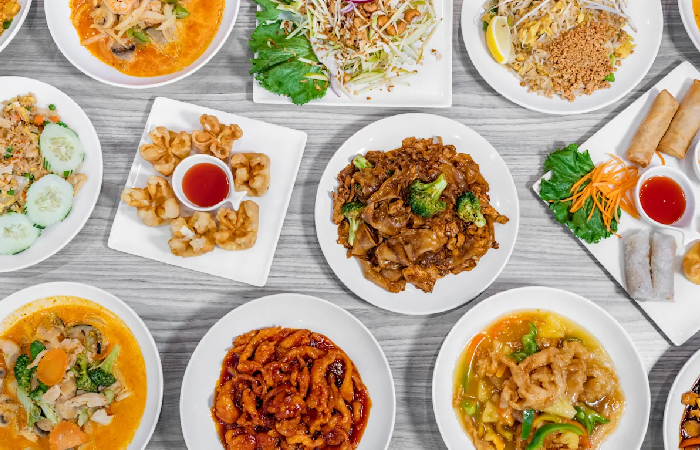
- Stir-fried chicken with sliced ginger is known as kai phat khing.
- Kaeng khiao wan, often known as "green curry" in English, is a coconut curry that is flavored with Thai basil and mixed with chicken or fish meatballs and fresh green chilies. One of the spicier Thai curries is this one.
- Kaeng phanaeng is a light, creamy coconut curry that can be made with chicken, pork, or beef (phanaeng nuea). It has some dried spices that are toasted and resemble kaeng matsaman. Be sure to opt for halal meat, if you want to try this dish. Make sure to verify the halal status of this dish before trying it.
- Kaeng phet, which translates to "spicy curry," is a coconut curry that is cooked with a lot of dried red chilies in the curry paste. It is also known as red curry in English.
- Kaeng som is a spicy, sour soup or curry that is typically served with rice.
Central Thai cuisine comes from the flat, damp plains in the middle of the country. It was once home to the Thai kingdoms of Sukhothai and Ayutthaya, as well as the Dvaravati civilization of the Mon people. They lived there before the Siamese arrived. A common ingredient in Central Thai cuisine is coconut milk.
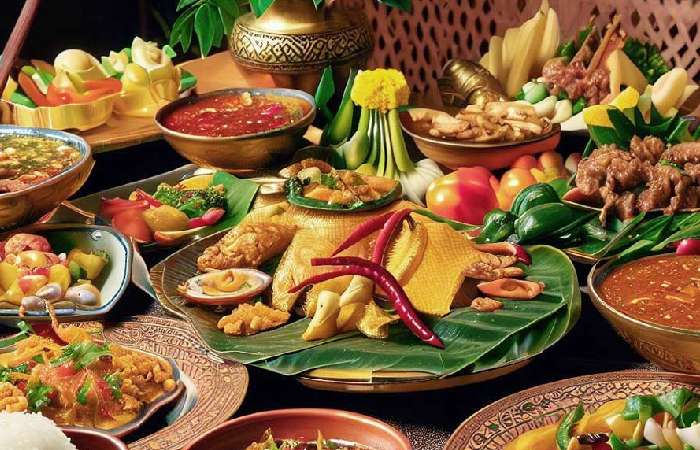
- The most common accompaniment to Ahan Phak Klang, or "central region food," is non-glutinous jasmine rice.
- Snapper cooked in thick red curry sauce, or chuchi pla kaphong.
- Ho mok pla is a fish pâté or soufflé that is boiled in a cup made of banana leaves, covered with thick coconut cream, and spices.
- Steamed fish with a fiery lime juice sauce is called pla nueng manao.
- Deep-fried fish served with a tamarind sauce that has three distinct flavors—sweet, acidic, and spicy—is known as pla sam rot.
- Similar to Laotian and Isan Tam mak hoong, som tam is a grated green papaya salad that is mashed with a pestle and mortar. Three primary variations exist:
- Som tam pu, which has pickled rice-paddy crab, dried shrimp, and peanuts
- Som tam pla ra, which has salted gourami fish, white eggplants, fish sauce, and long beans
- Som tam pu, which has all three of the aforementioned versions. Although sticky rice is typically served with som tam, serving it with rice noodles, or khom chin, is also a common alternative.
Be sure to avoid dishes with ingredients that don't comply with halal standards.
Isan or Northeastern Thai: The drier Khorat Plateau is the source of Isan, or Northeastern Thai cuisine, which is inspired by both Khmer and Laotian cooking. Glutinous rice is the main dish of Isan, and most Isan cuisine is spicy and made with regional ingredients that can be found on farms throughout northeastern Thailand.
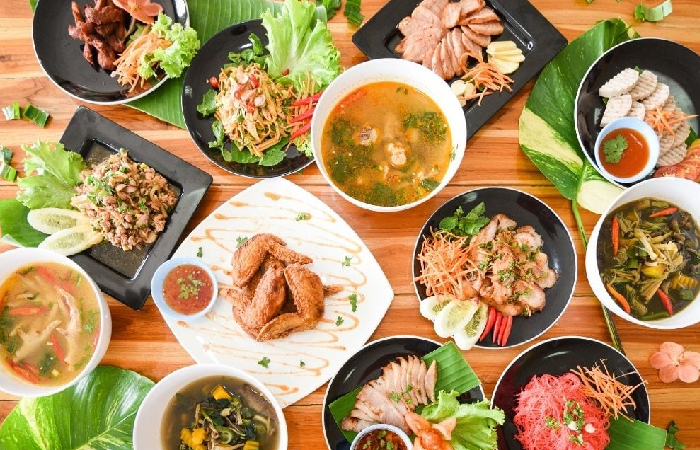
The main source of income for Isan people is farming. In this area, people farm rice, sugar cane, pineapple, potatoes, and rubber. The main dishes are:
- Dried chillies, fish sauce, palm sugar, and black-roasted rice flour are the main ingredients of Nam Chin Chaeo, a sticky, sweet, and spicy dipping sauce. It is frequently served with mu yang, as a dip.
This may also come with barbequed pork as a dip , but then it becomes haram for muslim consumption. Be sure to eat it after verfying its halal certification.
- In Thailand, a popular dish of stir-fried rice noodles and papaya salad is called Phat mi Khorat. This dish calls for a specific ingredient: dried rice noodles in various hues.
- Similar to central Thai som tam, but with more spice and less sweetness, and with pla ra (a sauce made from fermented fish), comes tam maak hoong, also known as som tam pla ra, a spicy papaya salad.
- Rib roast on the grill (suea rong hai).
- Grilled, marinated chicken is called kai yang.
- Lap mu krop is a Lao salad that combines beef, onions, chillies, roasted rice powder, and mint as garnish. It is a variant on the classic lap.
Northern Thai: The majority of the Lannaese people who live in northern Thailand are originally from the Lanna Kingdom, which once ruled over the Thai highlands' cooler valleys and forested mountains. This region is the source of northern Thai cuisine. This cuisine and Isan have a lot in common.
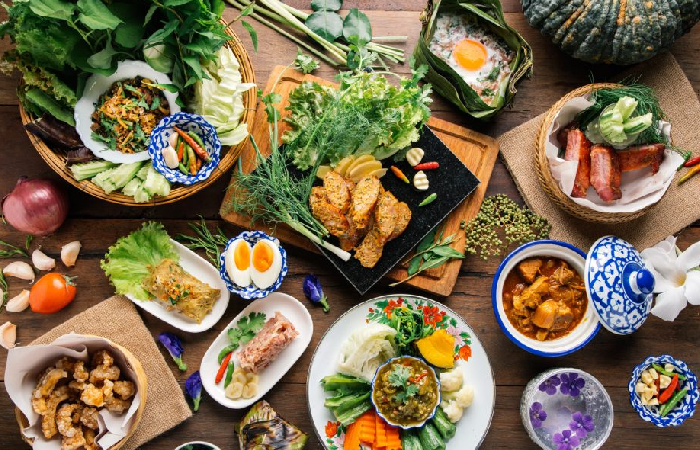
- Glutinous rice, not jasmine rice, is the main grain consumed in northeastern Thailand.
- Thick relish made with roasted chiles, garlic, galangal, and salt is called Nam Phrik Kha. This dish is frequently offered with steamed sliced beef shank or as a dip for steamed mushrooms.
- Mango plums, tamarinds, and green mangoes are examples of sour fruits that pair well with brown sugar chili sauce, or Nam Phrik Nam Oi.
- Eaten with sticky rice and both raw and steaming veggies, Nam Phrik Num is a spicy paste made from ground large green chilies, shallots, garlic, coriander leaves, lime juice, and fish sauce.
Northern Thai has dishes that mainly contain pork, crab and fish sauces . Its highly recommended to check for halal certification while eating in this reagion.
Southern Thai: The Kra Isthmus, which includes many islands and tropical waters on two sides, is the source of southern Thai cuisine. The former Sultanate of Pattani is an ethnic Malay territory located in the far south. The complex curries, cooking techniques, and use of spices and chiles in Southern Thai cuisine greatly influence the food's overall flavor.
- Non-glutinous rice is the staple diet of southern Thais.
- The Indian-Malay style curry known as "kaeng matsaman," or "Massaman curry" in English, is made with stewed beef and roasted dried spices like coriander seeds that are uncommon in other Thai curries. In a 2011 piece titled "World's 50 most delicious foods," CNNGo selected massaman as the top food.
- The names "kaeng som" (from the south of Thailand) and "kaeng lueang" (from the center of Thailand) refer to sour curry made with fruit, vegetables, or seafood that gets its acidity from tamarind juice.
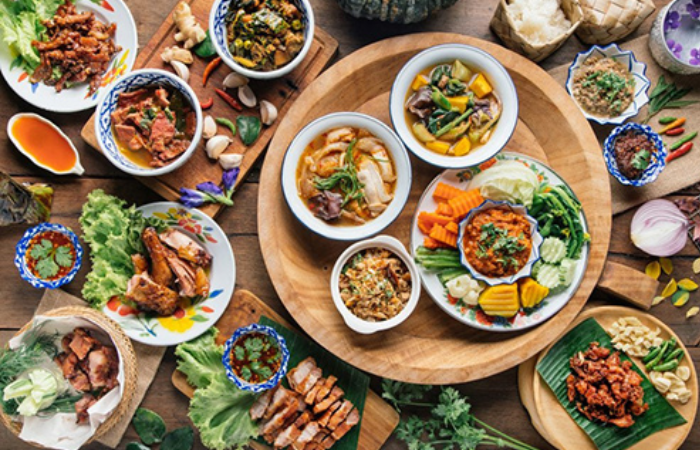
- Kaeng tai pla is a thick, sour vegetable curry made with shrimp paste and turmeric that frequently has eggplant, bamboo shoots, and roasted fish or fish organs.
- The Malay community in southern Thailand specializes in making Khao mok, a Thai-Malay style biryani.
- Southern Thai rice salad is known as khao yam.
- Khua kling is a dry, spicy curry made with diced or minced meat and occasionally yard-long beans. It is typically served with finely shredded bai makrut (kaffir lime leaves) and fresh green phrik khi nu (Thai chilies).
- Sate is a popular street meal in Thailand that consists of grilled meat, typically chicken or pork, eaten with cucumber salad and peanut sauce. The dish is originally from Malaysia and Indonesia.
- Southeast Asia is home to the Gnetum gnemon, also known as Bai liang phat khai. In Thai, it is frequently used. Unlike other species, Bai liang tastes rather oily and sweet rather than foul and bitter. It can be used to produce a number of recipes, like stir-fried red curry, or eaten as a vegetable with chili sauce. Bai liang phat khai, a popular meal, is stir-fried with eggs.
Recomendations
- These are but a handful of the numerous local specialties that are just waiting to be discovered.
- Make sure that ingredients and preparation techniques adhere to the standards of Halal by always asking questions.
- Don't be afraid to request modifications at restaurants since many of them are ready to accommodate dietary needs.
Halal Thai Street Food Delights
Thailand is known throughout the world for its street food selection and quality. Bangkok is sometimes referred to as the street food capital of the world and is among the greatest cities in the world for street cuisine.
-
Chinese coolie laborers came to Southeast Asia in the late 1800s, and they brought with them the street food culture. This means that Chinese cuisine has greatly affected or inspired numerous Thai street meals.
-
The native Thai population did not take to street food until the early 1960s, when the country's fast urban population development sparked its popularity. By the 1970s, street food had completely replaced home cooking. Originally, street food was mostly sold by Thailand's ethnic Chinese minority.
-
The best place to get street food is Bangkok, Thailand, because of its wide range of venues and plentiful selection. Bangkok is well-known for its wide range of options as well as the large number of street vendors in the area.
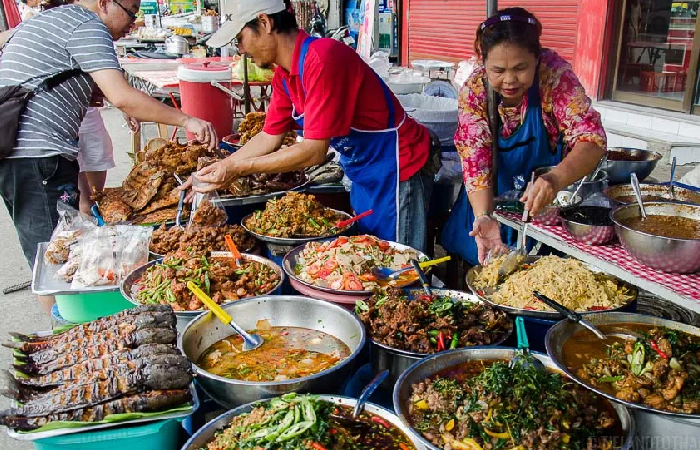
-
Almost every Thai food may be found in a market or being sold by a street vendor in Thailand. While some have a limited menu that is comparable to that of restaurants, others specialize in just one or two meals. While some solely offer pre-cooked food, others prepare meals on request.
-
Noodles are a popular street food item. Popular dishes include Chinese-style noodle soups, fried noodles, and fermented Thai rice noodles (khanom chin), which are typically served with a variety of Thai curries.
-
Sweet roti is a thin, flat fried dough envelope with banana, egg, and chocolate that is sold at stalls in most cities and towns. The roti is comparable to Singaporean roti prata and Malay roti canai, and Thai Muslims typically own the kiosks.
-
In the evenings, when it's cooler outside and people have finished work, night food markets take the shape of a jumble of mobile vendors and street stalls and appear in parking lots, on busy streets, at temple fairs, and at local festivals.
-
The food offered at wet markets is typically served cooked. There are a lot of individuals that go there and to the street sellers to buy meals to take home or to work.
The following advice will help you have a delicious and Halal street food experience:
- Look for Muslim Vendors: Halal street food booths are frequently found in areas with a higher Muslim population. Check for signs displaying the Halal
certification, or inquire about whether they serve Muslim patrons.
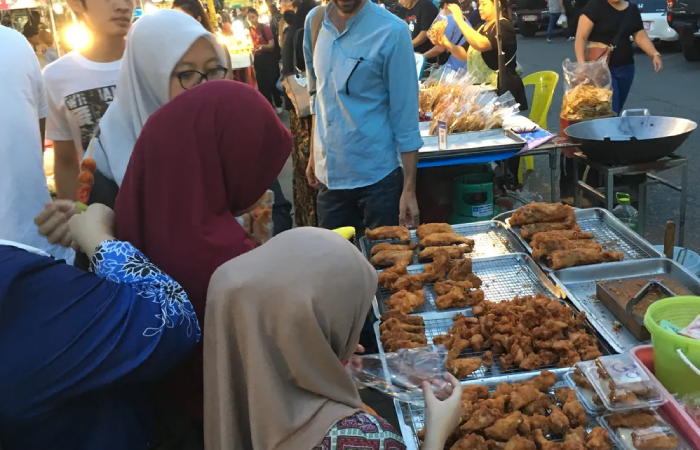
- Talk Clearly: Never be afraid to inquire about ingredients and cooking techniques. To say "Halal meat," use phrases like "เนื้อฮาลาล" (neua halal) for "Halal meat" or "ไม่มีหมู" (mai mee moo) for "no pork."
- Adopt Transparency: A lot of street sellers cook meals right in front of you, so you can see the ingredients and get clarification by asking questions.
Let's now explore some Halal street cuisine options that you must try:
Satay: A traditional Thai street dish, skewers of marinated and grilled meat (make sure it's halal). Delicious peanut sauce and fresh cucumber relish go well with chicken, beef, or even vegetarian options like tofu.
Roti Canai: This light flatbread can be topped with savory or sweet ingredients.
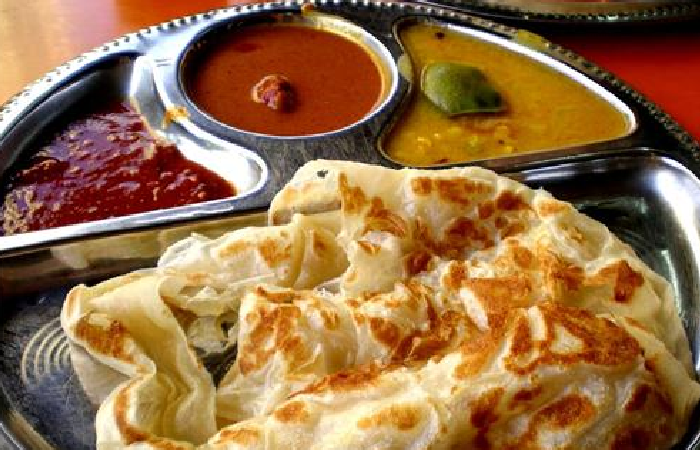
Savor it with dips, curries, or just sugar and condensed milk for a simple dessert.
Miang Kam: The delicious explosion of flavors and textures found in betel leaf bundles. Typically, they might have shrimp in them. Choose a vegetarian filling that combines fresh herbs such as peanuts, shredded coconut, kaffir lime leaves, lemongrass, and lime juice.
Moo Ping (Halal Version): Popular street snack of seasoned grilled meat skewers. Some sellers provide grilled chicken or beef skewers prepared similarly, providing the same savory and smoky aromas, as a Halal option.
Khanom Buang: There are savory and sweet variations of these Thai crepes.
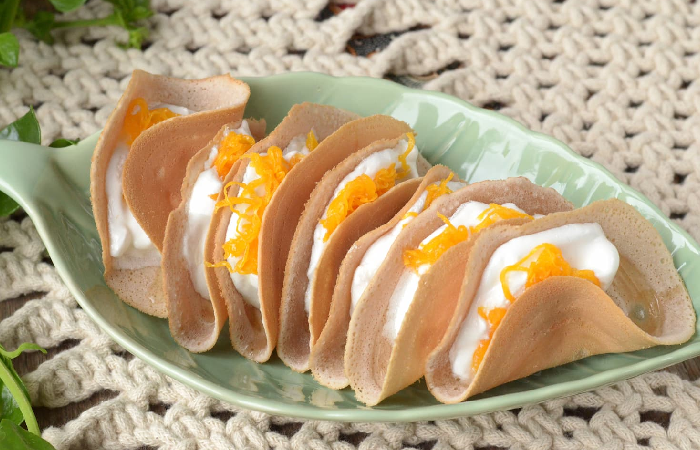
The savory variant can be packed with bean sprouts, shrimp (if sourced from Halal), and spiced eggs. Choose between a filling of chicken or veggies, or just eat them as is with a dash of lime and chilli flakes.
Thai street cuisine is quite diverse, which is part of its appeal. Here are a few more choices to consider:
- Coconut Ice Cream is a cool, naturally Halal treat that's ideal on a steamy Thai day.
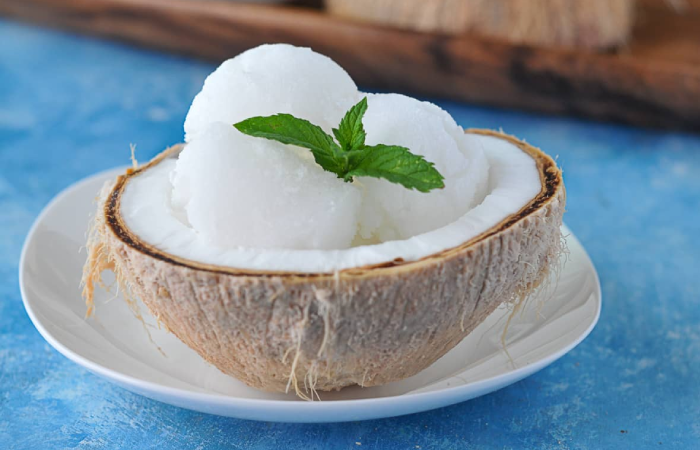
-
Mango Sticky Rice with Sticky Black Rice (Khao Niao Mamuang) is a Thai delicacy that blends fragrant sticky rice with luscious, sweet mangoes. Try the black rice variation of the traditional meal, called khao niao dang, for a unique take.
-
Grilled corn on the cob is a common street food snack.
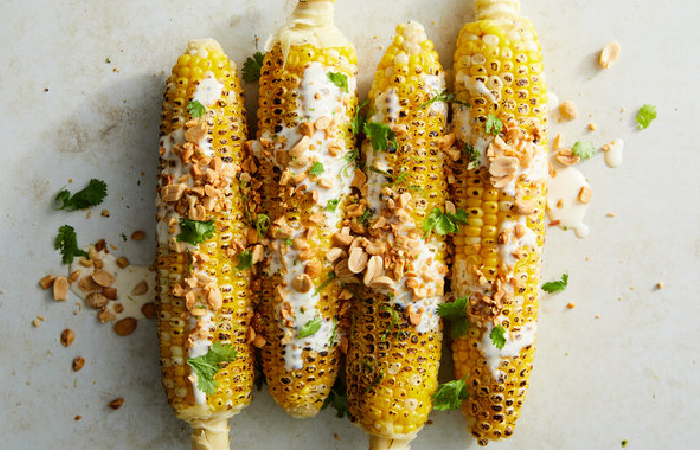
grilled corn on the cob is a simple yet tasty dish that is frequently seasoned with lime, salt, and chili flakes.
Discovering Halal Thai street cuisine is an engaging cultural experience. An excellent way to satiate your palate. Take in the bustle of the streets and go off on a delicious journey of Halal Thai street cuisine.
You'll find a world of delectable options that satisfy your religious convictions as well as your taste buds if you have an open mind and an open palette.
Navigating Halal Dining in Thailand
Prior to Travel: Research
Determine the halal areas: Higher Muslim population research areas: Yan Nawa district in Bangkok; Ao Nang area in Krabi. Halal eateries are frequently concentrated in these locations.
Use the websites and apps for Halal restaurants: To find Halal-certified restaurants in Thailand, download applications such as Zomato or HalalTrip.
Check internet reviews: See if reviews from other Muslim visitors discuss the Halal alternatives available at particular eateries.
How to Eat Halal in Thailand?
Search for logos from recognized Halal certification agencies on menus or signs. Reputable restaurants that have received Halal certification will have these brands displayed.
Pose inquiries: Never be afraid to inquire about ingredients and cooking techniques. Utilize fundamental Thai expressions such as "เนื้อฮาลาล" for "Halal meat" or "ไม่มีหมู" (mai mee moo) for "no pork."
Express Your Needs: Let the waiters know in advance about any dietary limitations you may have. This aids in their recommendation of appropriate meals and guarantees that your food is cooked in accordance with Halal standards.
Halal Food Etiquettes When Dining out in Thailand:
Table manners: Be mindful of others around you when eating, refrain from chatting loudly while chewing, and clear up spills.
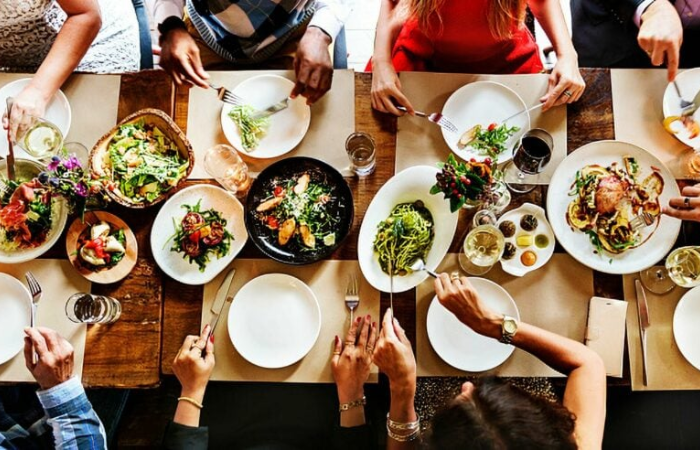
Etiquette: Show consideration for other patrons, particularly in peak dining periods. Don't hog too much room and keep noise levels in check.
Sharing: Thai meals are typically shared with others since sharing is caring. Enjoy the social element of eating by sharing meals.
Gratitude: It's always nice to thank someone for the meal and service. "Thank you" can be expressed with a simple "ขอบคุณครับ/ค่ะ" (Khop Khun Krap/Ka).
Dietry Considerations: Please be mindful of local customs and act nicely if you need to make any specific requests regarding your Halal diet.
Remember:
Thailand is known for its warm friendliness, and most people there will gladly meet your dietary requirements.
Be patient and mindful of your beliefs while you savor the pleasure of learning about Thai cuisine.
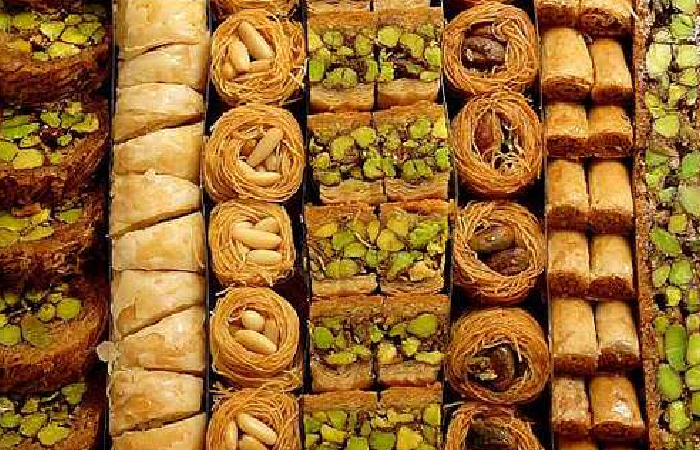
Cooking Halal Thai Cuisine at Home
Thai Classics with a Halal Twist: Delectable Recipes for Muslims
Trying out Thai food while following Halal guidelines is a fun journey. These well-known Thai recipes have been converted into versions that are suitable for Halal dining. They are full of taste and may be enjoyed at Halal restaurants or at home:
1. Pad Thai with Halal:
Ingredients:
- 150 grams of rice noodles that are dried
- Twist-up of vegetable oil
- two minced garlic cloves
- One finely sliced shallot
- One hundred grams of shredded Halal chicken (or, for vegetarians, tofu)
- One beaten egg
- one-fourth cup of bean sprouts
- 1/4 cup of scallions, chopped
- 1/4 cup of peanuts, crushed
- Thumbful of tamarind sauce
- One tablespoon of palm (or brown) sugar
- One tablespoon of fish sauce (or equal parts soy sauce and lime juice)
- One tablespoon dried shrimp paste (use vegetarian oyster sauce instead)
- Flakes of chili (to taste)
- slices of lime
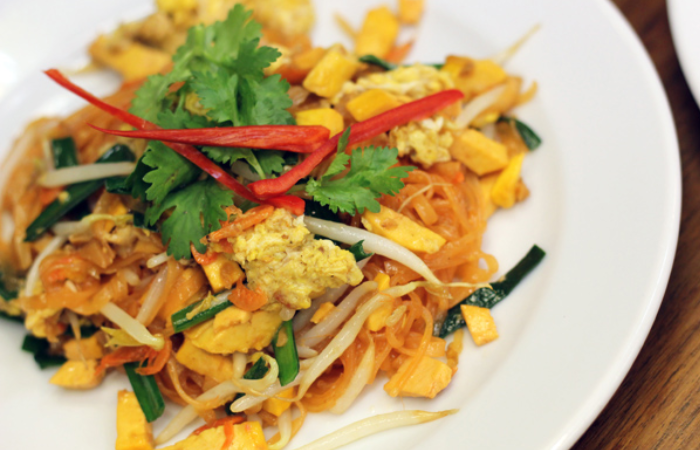
Preparation:
- To soften rice noodles, soak them in warm water for fifteen minutes.
- In a wok or pan, heat the oil. When aromatic, add the shallot and garlic and simmer.
- Break the egg into pieces by scrambling it in the pan.
- Cook the chicken (or tofu) until it turns brown.
- Add the softened rice noodles, oyster sauce replacement, tamarind sauce, palm sugar, fish sauce substitute).
- Mix everything together until the noodles are well heated and the sauce is evenly distributed.
- Take off the heat and add more chili flakes, smashed peanuts, scallions, and bean sprouts to taste.
- For a welcome refreshment, serve with wedges of lime.
2. Tom Yum Soup (Halal):
Ingredients:
- 4 cups of chicken broth (make sure the chicken is halal)
- Two bruised lemongrass stems
- Two leaves of kaffir lime
- two slices of galangal
- 2–3 chiles (modify according to desired level of spiciness)
- 1-tsp finely chopped cilantro
- One hundred grams of chopped mushrooms
- One hundred grams of cherry tomatoes
- 150 grams, boiled and finely chopped Chicken halal (optional)
- Two tablespoons of lime juice
- One tablespoon of fish sauce (or equal parts soy sauce and lime juice)
- One tablespoon of palm (or brown) sugar
- Add salt to taste.
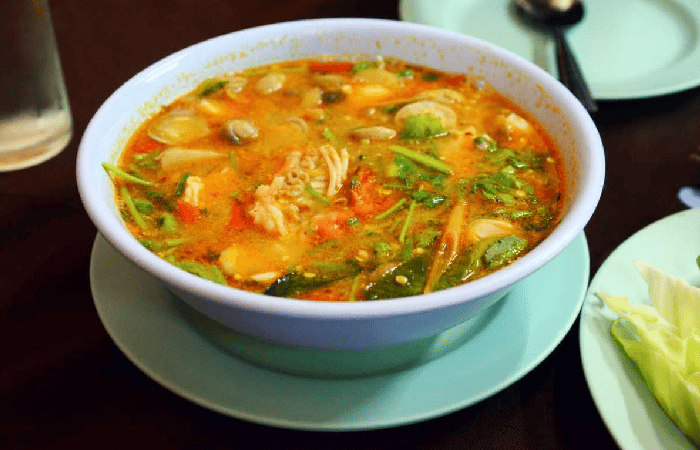
Preparation:
- Put the chiles, galangal, kaffir lime leaves, lemongrass, and chicken broth in a pot. After bringing to a boil, lower heat, and simmer for ten minutes.
- Add the cherry tomatoes and mushrooms.
- Simmer the vegetables for a further five minutes, or until they are soft.
- Add the lime juice and cooked chicken, if using.
- Put salt to taste
- Add palm sugar, a replacement for fish sauce to taste.
- Garnish with chopped cilantro and serve hot.
3. Halal Green Curry:
Ingredients:
- One tablespoon of green curry paste (do not use shrimp paste)
- Spoonful of vegetable oil
- two minced garlic cloves
- 400 ml of coconut milk and one thinly cut shallot
- 150 grams of cubed halal chicken (or, if vegetarian, veggies)
- One sliced green bell pepper
- One sliced eggplant (optional)
- One tablespoon of fish sauce (or equal parts soy sauce and lime juice)
- One tablespoon of palm (or brown) sugar
- Leaves from Kaffir limes (optional)
- Leaves of Thai basil (for garnish)
- cooked rice
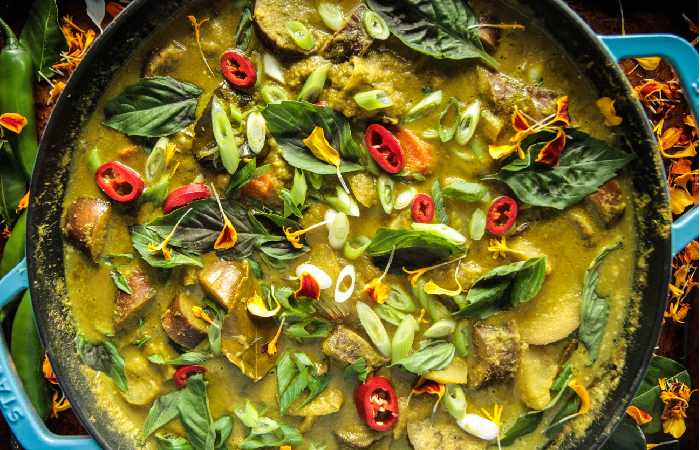
Preparation:
- In a saucepan or pan, heat the oil. Add shallot, garlic, and green curry paste. Cook until aromatic.
- After adding the coconut milk, boil the mixture.
- Add the green bell pepper and chicken (or veggies). Simmer until the chicken is thoroughly cooked and the vegetables are soft, about 10 minutes.
- If using, add the eggplant and cook for an additional five minutes.
- Add a pinch of salt, palm sugar, and (if using) kaffir lime leaves for seasoning.
- Garnish with some Thai basil leaves and serve warm over cooked rice.
You may enjoy the exquisite flavors of classic Thai foods while adhering to your dietary restrictions by using these Halal-friendly replacements and following these recipes.
Halal Thai Desserts: A Sweet Finale
While fresh fruit usually concludes Thai dinners, sugary snacks—which are often consumed in between meals—may also be served as dessert on occasion.
Desserts are abundant in Thailand, and Muslim visitors will find a plethora of delicious alternatives that follow Halal guidelines. A taste of some well-known Thai desserts and their halal counterparts is provided below:
1. Mango Sticky Rice (Khao Niew Mamuang): Fortunately, this well-known Thai treat is natively Halal!
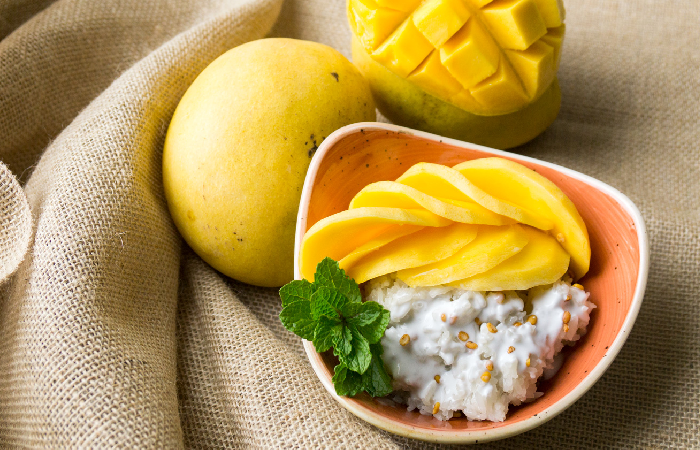
Serve well cooked, fragrant sticky rice with slices of juicy, sweet mango. Pour in a little coconut milk to add even more flavor and richness.
2. Chè (Thai Sweetened Beans and Fruits): A light coconut milk broth is served with a variety of cooked beans, fruits, and jellies in this colorful dessert.
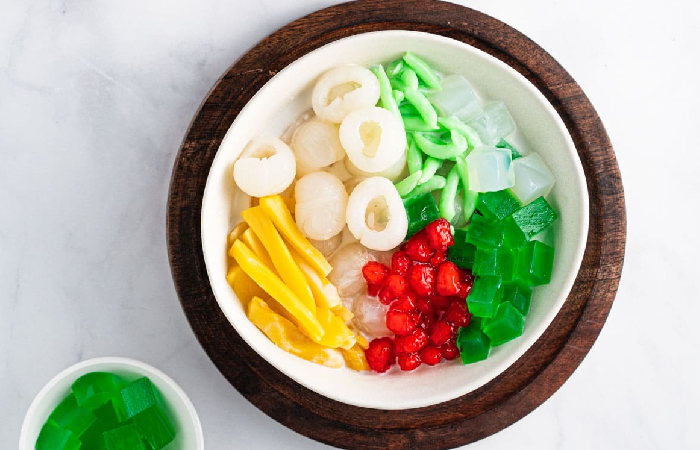
Select a solution that doesn't include non-Halal components like gelatin.Before choosing, find out about the ingredients as many sellers have a wide range of possibilities...
3. Khanom Chan, or Thai Layer Cake: This vibrant delicacy is made up of layers of vibrant pancakes that resemble crepes and are filled with a sweet coconut mixture. Traditionally, eggs could be a part of the filling.
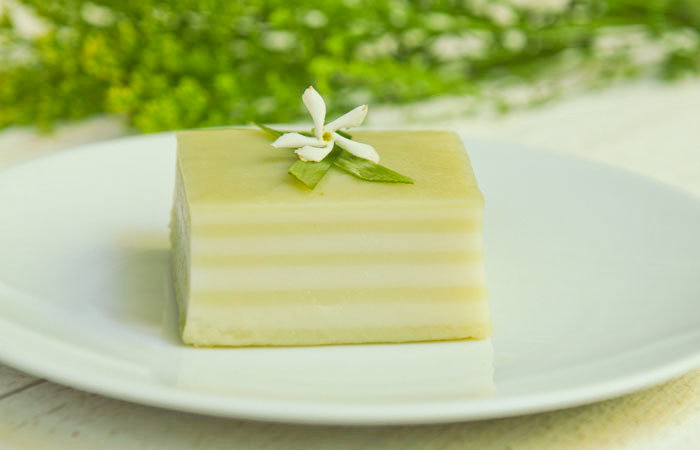
Some shops do, however, sell Halal versions that are manufactured with mung bean flour or other egg alternatives. To spot this delicious delicacy, look for bright colors and airy textures.
4. Lot Chong (Thai Water Chestnuts in Coconut Cream): Simmer translucent water chestnuts in a sweet coconut cream sauce to create this cool treat.
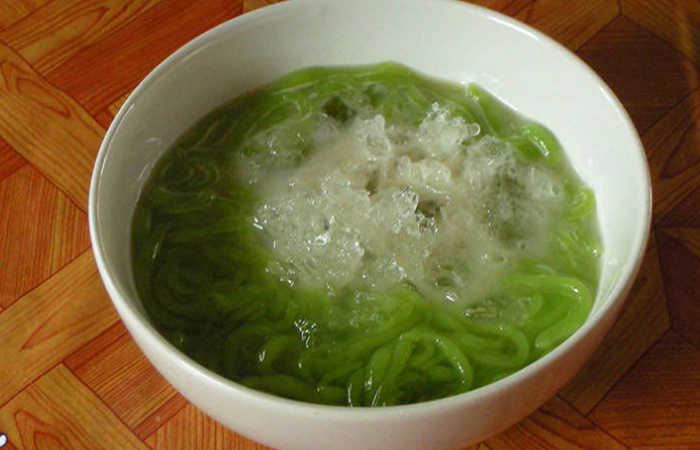
It has a delicious textural contrast between the soft chestnuts and the creamy sauce and is inherently halal.
5. Thai Red Ruby Water Chestnuts, or Tub Tim Grob: You may be surprised by this colorful treat! Water chestnuts get their stunning ruby red color from being kept in a brine.
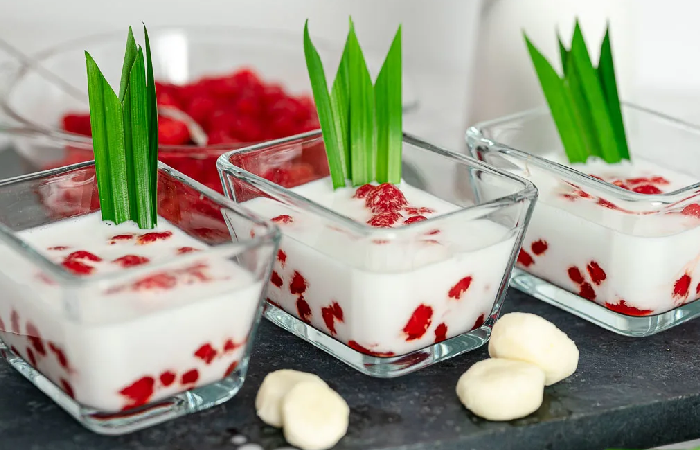
After that, they are presented with shaved ice and jellies in a sweet syrup. For a Halal version, make sure the syrup is devoid of animal-based gelatin.
6. kham dok chok: Coconut milk, eggs, and starch are combined to make the crispy lotus blossom biscuit known as kham dok chok.
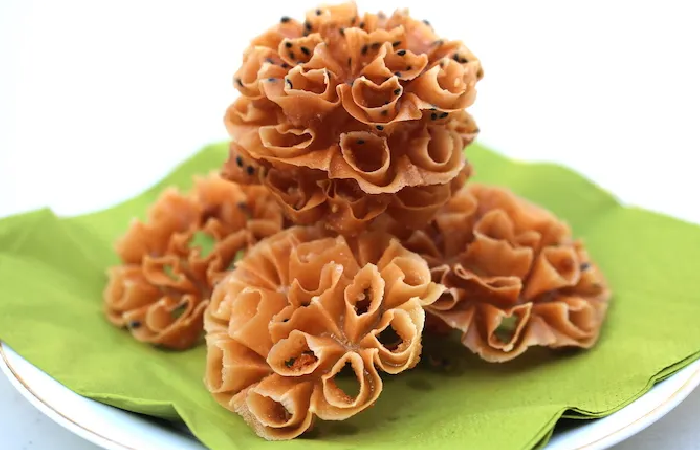
7. Khanom farang kudi chin: is a Portuguese-style sponge cake that is created in Bangkok's Thon Buri District by the Kudi Chin community.
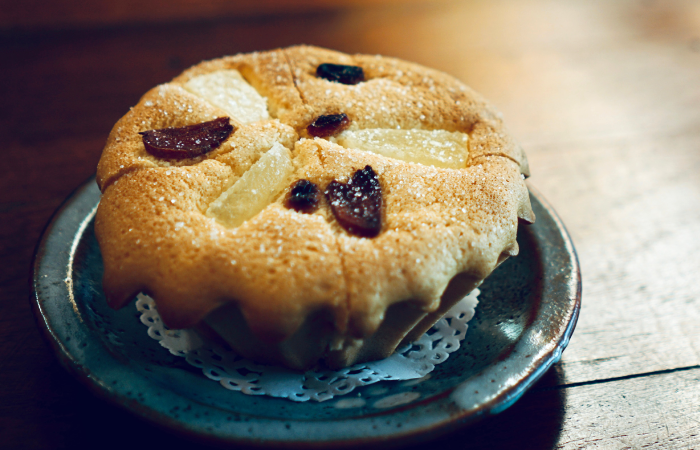
The pumpkin topping was a gift from the local Chinese community, who believed that pumpkin was fortunate. The cake was made in a wood-fired oven in the Portuguese tradition. There are just three ingredients needed: sugar, flour, and duck eggs. Bangkok City Hall has designated the cake as one of the six "local wisdoms" of Bangkok that should be preserved.
Health Benefits of Halal Thai Cuisine
While cooking techniques and ingredient selections might affect the nutritional content of Halal Thai dishes, the following is a summary of several well-liked options and their top health benefits:
Ingredients and Health Advantages:
-
Chicken is a lean protein source that is necessary for tissue growth and repair.
-
Tofu makes a fantastic replacement for vegetarians since It is a plant-based protein. It is high in iron and calcium.
-
Vegetables are high in vitamins, minerals, and fiber. They are important for overall wellbeing and gut health.
-
Coconut milk is the best sources of healthy fats. It gives curries a thick, creamy texture.
-
Lemongrass can help with inflammation reduction and improved digestion.
-
Similar to ginger, galangal contains anti-inflammatory and antioxidant properties.
-
The kaffir lime leaves give the food a distinct citrus scent. They may possibly have antibacterial properties.
-
Vitamin C content is high in chilies. Capsaicin accelerates metabolism and helps with digestion.
Advice on Healthier Decisions:
- Select Grilled or Steamed options this cuts down on extra fat from frying.
- Select lean protein sources such as tofu or chicken instead of processed meats.
- Regulate the Size of the Portion. Savor the tastes without going overboard.
- Ask for Less Sauce or Oil this lowers the total amount of calories
Celebrating Halal Thai Cuisine: Festivals and Traditions
In Thailand, festivities are typically heavily centered around food. Some of the most well-known food-themed festivals and cultural events in Thailand are listed below:
- Songkran, or Thai New Year, is celebrated from April 13 to April 15. It is often called the Water Festival. Participants hurl water at one another.

This is done in an effort to ward off bad luck and embrace a new beginning. Families and friends enjoy themselves. Dishes served during the Songkran celebrations include papaya salad, rice soup, and pineapple fried rice (khao pad saparot).
-
Vegetarian festival takes place in Phuket and other parts of Thailand in September or October. Devotees refrain from eating meat and other animal items at this time. There are several of options for the vegetarian and vegan, such as seitan and tofu, as well as tasty plant-based meat alternatives.
-
Chiang Mai Food Festival is annual event that honors the city's distinctive culinary customs. It is held in April. There are many different food booths during the festival. They offer anything from foreign cuisine to local specialties from northern Thailand. Cultural events, competitions, and culinary displays are also offered.

-
Rocket festival (Bun Bang Fai) is held in mid-May in various northeastern Thai provinces. These include Yasothon and Roi Et. This fertility celebration involves a competition to fire handcrafted rockets into the air. Families and friends get together for feasts on this occasion. It includes typical Isan fare like papaya salad, sticky rice, and grilled chicken.
-
Phi Ta Khon Festival is the unique and colorful celebration, usually takes place in June or July. it is hosted in the Dan Sai district of the province of Bueng Kan in northeastern Thailand. People dress up as devils and ghosts. The festival has a food market with a variety of Isan cuisines.
-
The combined Loi Krathong and Yi Peng Lantern Festivals are held on the full moon of the twelfth lunar month. This usually falls in November. Floating decorated kratongs, or baskets, over rivers and lakes is the practice of Loi Krathong, whereas Yi Peng involves shooting sky lights into the air.

These festivities are times to give thanks and ask for forgiveness. Dinners featuring classic Thai dishes like pad thai, tom yum soup, and khao tom (rice soup) are enjoyed by families and friends.
Exploring Halal Certification in Thai Cuisine
In Thailand, various central Islamic authorities work with relevant government entities to supervise the process of getting Halal certification for eateries. The main steps involved are broken out as follows:
Selecting a Certification Body for Halal Food:
1. selection Of Certification Bodies:
Restaurants can select from a number of recognized organizations for Halal certification. Several well-known choices are:
- The CICOT, or Central Islamic Committee of Thailand, The website halal.co.th/en/ (This is the government-affiliated organization in charge of certifying Halal food.)
- The Islamic Committee of Chulalongkorn University's Halal Science Center
2. Documentation and Application:
The designated certifying authority offers application forms and requests particular records from the eatery, including:
- Documents for business registration
- Information about the sources and ingredients
- Plans for hygiene and kitchen layout
- Records of staff training (pertaining to Halal practices)
3. Review and Pre-Audit:
The restaurant's adherence to Halal standards is evaluated by a pre-audit conducted by the certifying agency. This entails going over the paperwork and doing a quick check-up on the cooking facilities.

4. Comprehensive Audit:
After the pre-audit is successfully finished, a group of auditors thoroughly inspects the eatery. The following areas are the focus of this inspection:
- Obtaining ingredients for halal cuisine (meat, poultry, and other animal products)
- Procedures for handling and storing goods to avoid contamination
- Methods of food preparation to guarantee compliance with Halal regulations (e.g., using different utensils for meat and non-meat foods)
- Employee understanding and comprehension of the halal principles
5. Choice and Accreditation:
The certification agency makes a determination about Halal certification based on the audit findings. The establishment is granted permission to display the official Halal logo and is given a certificate of approval for Halal food.
6. Procedure for Renewal: Halal certification needs to be renewed periodically to maintain its validity.
7. Continuous Adherence: Restaurants are randomly inspected to ensure continued compliance with the Halal criteria.
Why Certification of Halal Food Is Important
Muslim patrons can rest easy knowing that the meal is produced in compliance with Islamic law thanks to the Halal certification. It also allows restaurants to serve a wider range of customers and benefit from the growing demand for Halal food.
Understanding the Halal certification procedure may make it easier for you to recognize the effort and dedication restaurants put out to ensure that the food on their menus satisfies Muslim dietary rules.
Conclusion
Rich cultural heritage, bold flavors, and regional specialties are all evident in the realm of Halal Thai cuisine. It complies well with Islamic dietary regulations and caters to Muslim tourists looking for tasty and genuine gastronomic experiences.
-
From savory curries to crisp salads Savor the bright flavors of papaya salad (Som Tam) with a dressing devoid of seafood, or indulge in the aromatic world of Halal Thai curries like Massaman or green curry.
-
Discover the vibrant world of Halal Thai street cuisine, where vendors provide a variety of dishes such savory crepes (Khanom Buang), coconut ice cream, and satay skewers, which are ideal for cooling off on a hot Thai day.
-
Savor the wealth of naturally Halal Thai cuisine, such as aromatic Mango Sticky Rice, which combines sweet and savory flavors, or Khao Mok Gai, which is steamed chicken with rice.
Tasting Halal Thai food doesn't have to entail compromising on taste or diversity. It is simple to peruse menus and make sure your dietary requirements are satisfied with a little preparation and communication:
- Look for Muslim-friendly neighborhoods with larger Muslim populations, as these are more likely to have restaurants serving Halal food.
- Seize the chance to pick up some simple Thai terms about following a particular diet.
- Tell servers ahead of time about any dietary requirements you may have so they may provide appropriate dish recommendations and make sure your meal is cooked in accordance with Halal standards.
Thai halal food provides a great sensory experience, including the opportunity to:
- Learn about the distinct flavors of Thailand's diverse regions, from the spicy Isan cuisine to the creamy curries of the south.
- Take in the lively ambiance of Thai eateries and marketplaces while relishing the cuisine and the friendly warmth of Thai hospitality.
- Learn about flavor combinations, cooking methods, and new ingredients that will excite your palate.
So, set out on your halal Thai culinary journey with an inquisitive palate and an open mind. With an abundance of delectable and Halal-friendly cuisine options, Thailand awaits you from the busy streets of Bangkok to the tranquil beaches of the south.

